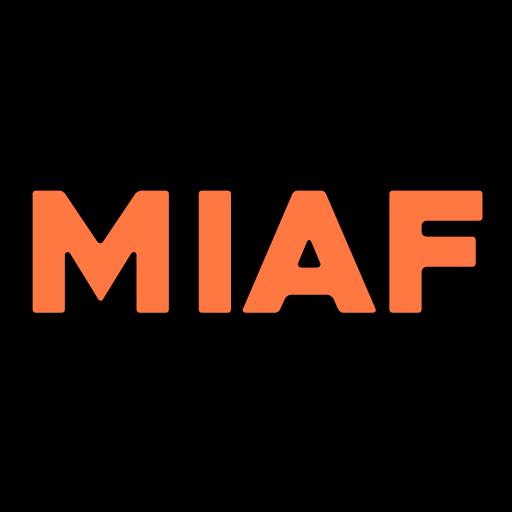
Dick Arnall was a remarkable and significant figure in contemporary British animation, and one who died far too early. What follows is my obituary for Dick, published originally in The Guardian on the 18th April 2007. It is followed by a moving and amusing personal statement from Robert Bradbrook, animator and Head of Animation at the NFTS, whose multi-award winning film ‘Home Road Movies’ was produced by Dick and shows in our tribute programme.
Dick Arnall: Influential and award-winning British animator
The call “Death to Animation” might seem surprising coming as it did from a man who spent more than 40 years working in the medium but Dick Arnall, who has died aged 62 of pneumonia as a consequence of a brain tumour, was no ordinary producer. His striking 2005 polemic on the animate! website sought to free up discussion around the possibilities of the manipulated moving image. It revealed him to be at the forefront of thinking about what animation could be and do.
Born in Sunderland, he was the son of a design engineer and a domestic science teacher. Educated at Monkwearmouth grammar school he studied metallurgy at Queens’ College, Cambridge.
At university he ran a successful film society and devised what was Britain’s first animation festival there (1965, 1967, 1968). Described in 1968 by the International Film Guide as “by far the most original, exciting and creative film festival ever staged in the British Isles”, the Cambridge seasons brought an international experimentalism to the country’s filmgoing, showcasing the New Zealand-born film-maker Len Lye among many others. The festival was revived in 1979, with Arnall contributing unpaid support.
A move to London saw him work on George Dunning’s Beatles vehicle Yellow Submarine (1968), the first animated British feature for 14 years, before joining Halas and Bachelor as assistant managing director (1969-1972). Talent-spotting and supporting the generation who became the industry leaders of the 1970s and 80s, Arnall produced first films by Paul Vester, Geoff Dunbar, Gillian Lacey and others, and managed the studio’s Jackson Five and Osmond Brothers’ series for ABC-TV in the US.
He travelled to festivals across Europe, and while attending the Mamaia festival in Romania was held up by armed bandits; he also met his wife, Finnish animator Marjut Rimminen. Her relocation to London and the birth of their son Timo in 1976 saw Arnall as an active house husband, extending their Highbury house single-handedly.
He returned to independent production with Rimminen’s I’m Not a Feminist But… (1986), the first of 10 multi-award winning animations he would make in the following 15 years. These included Tim Webb’s pioneering A is for Autism (1992), Ruth Lingford’s Death and the Mother (1997), created on an Amiga home computer and Robert Bradbrook’s autobiographical Home Road Movies (2001) for New York’s Museum of Modern Art. Arnall’s nurturing and defence of film-makers, especially emergent talents, ran through all he did.
It was this, coupled with his reputation for an unshakeable professional honesty, that saw him approached by David Curtis, Keith Griffiths and Clare Kitson, then head of animation for Channel 4, when they set up the broadcast commissioning project animate!, in conjunction with the Arts Council of Great Britain in 1990. He worked as its independent production adviser until 1998, steering 35 films to completion and numerous prizes, and was himself voted top producer in Creation magazine’s 50 Hottest Names in British Animation in 1999.
In 2000 he returned to run the project itself through his own company Finetake. Radically extending its scope to take in an international artists’ award and a major online archive and information resource (animateonline.org), Arnall turned his advocacy of animation as a visionary art form into a sustaining network.
Always distinctive in his Marimekko shirts, Arnall never separated life and art, welcoming the free flow of conversation and the company of the table – he hugely enjoyed the 18th-century atmosphere of the Soho club Blacks, of which he was a founding member in 1993.
Passionate in his defence of classical techniques and new technologies, he was a selfless enthusiast for the work of others. He was simply one of the most decent and generous people that those who met him have known.
He is survived by his wife and son.
· Richard Baxter Arnall, animation producer, born July 14 1944; died February 6 2007
Original Obituary in The Guardian

Robert Bradbrook adds:
“I have many fond memories of Dick that remind me of the incredible producer he was, but my favourite is his folder system. When he arrived at a meeting, he would look into his Marimekko bag for the folder with that film’s paperwork. Each production had its own individual colour. Mine was yellow. When he pulled it out, he always said, “Ah, yellow, I put my favourite project in this yellow folder.” This always gave me a satisfying feeling that, even though Dick had many other directors, we were working together on his special project.
After his death, I mentioned this to some of the other directors, who also had a similar memory, but for them, it was the red, the green or whichever folder their work was in that he said was the special folder. 🙂
Dick always made you feel that you were the centre of his professional world. Wherever you went, he would champion you and your work, from meetings in production houses to complete strangers that we met on the street! As a young and unconfident animator it was brilliant having Dick highlighting the value of your work creatively and reminding you not to under-sell yourself.”

Magic in Marimekko: Dick Arnall, Animate and the Manipulated Moving Image – a Tribute screens at the Close-Up Cinema Sun 24 Nov and online from the same date (available for 48 hours)

















Leave a Reply